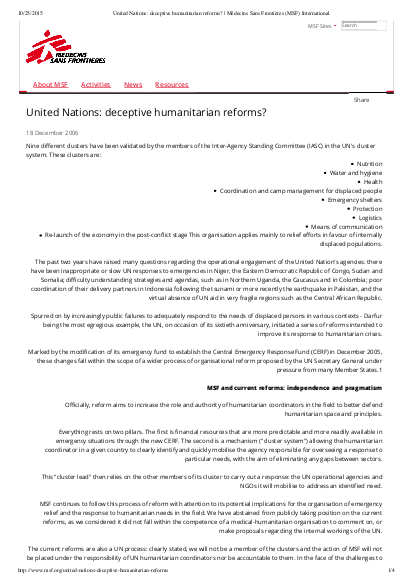
Nine different clusters have been validated by the members of the Inter-Agency Standing Committee (IASC) in the UN's cluster system. These clusters are:
Nutrition Water and hygiene Health Coordination and camp management for displaced people Emergency shelters Protection Logistics Means of communication Re-launch of the economy in the post-conflict stage This organisation applies mainly to relief efforts in favour of internally displaced populations. The past two years have raised many questions regarding the operational engagement of the United Nation's agencies: there have been inappropriate or slow UN responses to emergencies in Niger, the Eastern Democratic Republic of Congo, Sudan and Somalia; difficulty understanding strategies and agendas, such as in Northern Uganda, the Caucasus and in Colombia; poor coordination of their delivery partners in Indonesia following the tsunami or more recently the earthquake in Pakistan, and the virtual absence of UN aid in very fragile regions such as the Central African Republic.
Spurred on by increasingly public failures to adequately respond to the needs of displaced persons in various contexts - Darfur being the most egregious example, the UN, on occasion of its sixtieth anniversary, initiated a series of reforms intended to improve its response to humanitarian crises.
Marked by the modification of its emergency fund to establish the Central Emergency Response Fund (CERF) in December 2005, these changes fall within the scope of a wider process of organisational reform proposed by the UN Secretary General under pressure from many Member States.